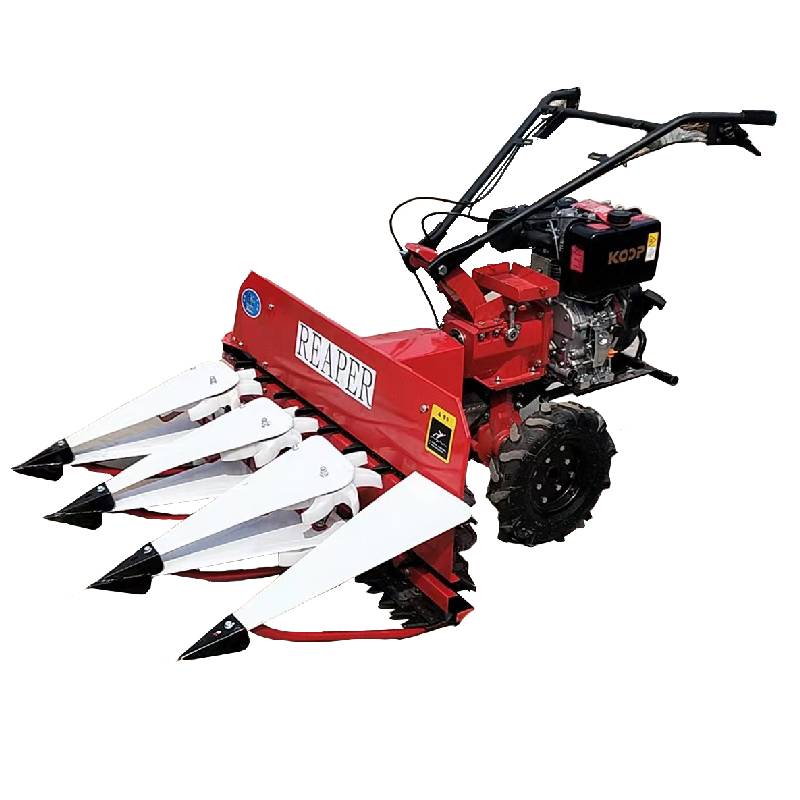wheat harvesting machine
The Evolution and Importance of Wheat Harvesting Machines
Wheat has long been one of the most significant crops worldwide, serving as a staple food for billions of people. The efficient harvesting of this vital grain is crucial for ensuring food security and maintaining agricultural productivity. The development of wheat harvesting machines has transformed the way farmers approach this essential task, significantly increasing efficiency, productivity, and safety in the field.
The historical journey of wheat harvesting machines is a fascinating one, beginning with simple hand tools in ancient agricultural societies. Before the advent of mechanization, wheat was harvested using sickles and scythes—a labor-intensive and time-consuming process requiring considerable human effort. Farmers would spend countless hours cutting the wheat by hand, often working from dawn until dusk. This manual method was not only arduous but also limited the scale of production that could be achieved.
The first significant innovation in wheat harvesting came with the invention of the reaper in the early 19th century. Invented by Cyrus McCormick in 1831, the mechanical reaper revolutionized the harvesting process. It allowed a single operator to cut down wheat in a fraction of the time it took a team of people. This invention laid the foundation for modern agricultural machinery and paved the way for further advancements.
As technology progressed throughout the 19th and 20th centuries, the wheat harvesting machine evolved into more sophisticated forms. The introduction of the combine harvester marked a pivotal moment in agricultural history. Combining several harvesting operations—cutting, threshing, and winnowing—into one machine, the combine harvester drastically increased the efficiency of harvesting wheat. These machines could harvest large fields with minimal labor, significantly reducing the time needed for harvesting and increasing overall crop yield.
wheat harvesting machine

Modern wheat harvesting machines are equipped with cutting-edge technology to enhance their efficiency further. Many contemporary combines are fitted with GPS systems that improve navigation and field mapping, ensuring that every inch of the field is harvested with precision. Additionally, advancements in sensor technology allow these machines to monitor crop conditions in real time, optimizing the harvesting process and minimizing waste.
The environmental impact of wheat harvesting machines is also a consideration in modern agriculture. As society becomes increasingly aware of sustainability issues, many manufacturers are working to design machines that consume less fuel and reduce soil compaction. Electric-powered and hybrid models are entering the market, providing farmers with options that align with sustainable farming practices. Moreover, advancements in technology help to limit the machinery's negative impact on the environment, ensuring that food production does not come at the expense of ecological health.
The importance of wheat harvesting machines goes beyond efficiency and productivity; they also enhance the safety of agricultural workers. Traditional manual harvesting methods placed farmers in potentially hazardous situations, from exposure to harsh weather conditions to injuries from using sharp tools. Modern machines are designed with safety features that protect operators while reducing the physical strain associated with harvesting, allowing them to work longer hours with less risk of injury.
In conclusion, the evolution of wheat harvesting machines is a testament to human ingenuity and the relentless pursuit of agricultural efficiency. From the humble sickle to the sophisticated combine harvester, these machines have drastically altered the landscape of wheat production. As technology continues to advance, the future of wheat harvesting promises to be even more efficient, sustainable, and safe. By investing in these tools, farmers can not only enhance their productivity but also contribute to global food security, ensuring that this vital crop can continue to feed the world’s population for generations to come. The journey of wheat harvesting machines reflects broader trends in agriculture and technology, highlighting the essential role that innovation plays in shaping our collective future.
Latest news
-
When to Upgrade Your Old Forage HarvesterNewsJun.05,2025
-
One Forage Harvester for All Your NeedsNewsJun.05,2025
-
Mastering the Grass Reaper MachineNewsJun.05,2025
-
How Small Farms Make Full Use of Wheat ReaperNewsJun.05,2025
-
Harvesting Wheat the Easy Way: Use a Mini Tractor ReaperNewsJun.05,2025
-
Growing Demand for the Mini Tractor Reaper in AsiaNewsJun.05,2025







